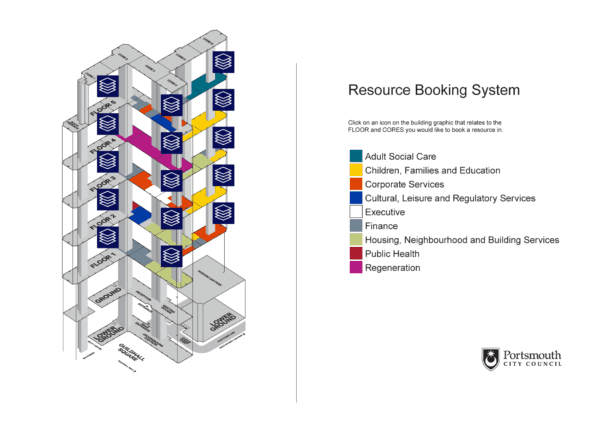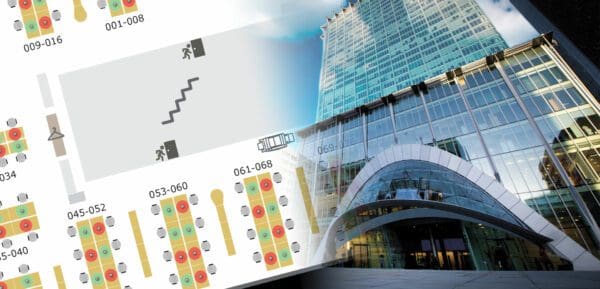Meeting room booking
Aerospace engineering giant optimises meeting room usage
Global leader in aerospace, defence and related services optimises its meeting room utilisation
Following a multi-million pound site redevelopment, customer support and other staff were moved from various leased accommodations in the vicinity into a new, dedicated workspace which today houses 4,500 employees.
At the heart of the workspace is a new-build open plan office space, and, immediately beside it, a re-furbished Grade II listed art-deco building.
Both spaces were designed with new working practices and efficiencies in mind:
This included a desk sharing scheme along with laptops and WiFi connectivity designed to underpin flexible working initiatives. A drive to promote car sharing, cycling or using public transport to get to work went hand-in-hand with the provision of fewer car parking spaces.
There would also be 33% fewer meeting rooms than in the previous office space. This meant the organisation needed a service that would allow them to streamline the room booking process and overall optimise room utilisation.
With over 11,000 meetings taking place a month and just over 100 meeting rooms, satisfying demand would be a huge challenge.
To date the company had been using Microsoft Outlook Calendar to book meetings and meeting rooms. This system worked well, but it was not uncommon for rooms to be booked in advance but not actually get used ‘on the day’.
By adding room panels that could display meeting room bookings in ‘real time’, it was hoped that staff would get a much better view of room availability ‘on the day’. So, for example, if a room had not been pre-booked using Outlook Calendar, the system should make it easy for staff to make ‘walk-by’ bookings.
Importantly, if a room had been pre-booked, but the meeting organiser did not show up on the day, the system should allow the room to be automatically freed up to be used by other members of staff.
The ideal solution should have the following capabilities:
- Integrate with the corporate email and calendaring system
- Enable users to check-in on screen on arrival
- Detect if the organiser has not shown up within a pre-defined time-frame
- Automatically free the room up for re-use
- Easy to tailor design to fit in with new offices
The client chose to use a room booking solution and meeting room screens from Essential.
The screens were mounted on the glass walls outside each room and were powered over Ethernet cables.
As a design touch all screens feature a stylish backdrop of firm’s flagship airplanes.
Any advance bookings made in Outlook Calendar are displayed ‘on the day’ on the room screens
How the Vital ‘Check-In Process’ Avoids Unused Meeting Rooms
The company has implemented a short time-window in which the room must be checked into. If the meeting organiser does not turn up within 5 minutes after the allotted start time, the room will automatically be made available for use by other staff members.
A typical scenario would be that first thing in the morning, all the meeting rooms would show on screen as being booked, but after a short while, the rooms that were not being checked into would get released, and be available for other staff to use.

















